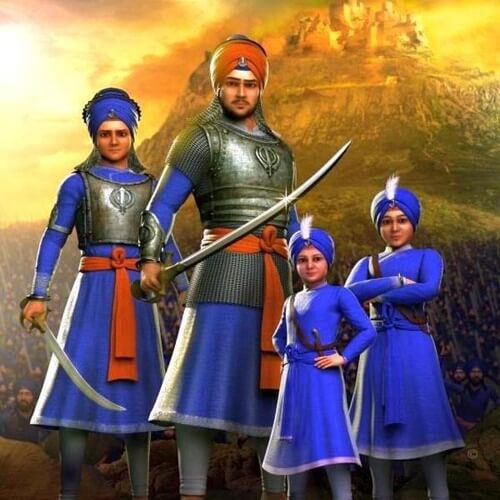BADDON, village 10 km southeast of Mahilpur in Hoshiarpur district of the Punjab, has a historical shrine, Gurdwara Baba Ajit Singh, commemorating the visit in March 1703 of Sahibzada Ajit Singh (1687-1705), the eldest son of Guru Gobind Singh. Sahibzada Ajit Singh, on his way back from Bassi Kalan where he had gone to rescue a young Brahman bride from the clutches of the local Pathan chieftain, halted here to cremate one of his warriors, Bhai Karam Singh, who had been wounded in the skirmish at Bassi and had since succumbed to his injuries.

CHAR SAHIBZADE, (char = four + sahibzade = scions, young men of genteel birth) is a term endearingly used for the four sons of Guru Gobind Singh, Nanak X, all of whom died as martyrs while still very young. Their names are reverently preserved in Sikh memory and are recalled every time Sikh ardas or prayer of supplication is recited at a congregation or privately by an individual. See AJIT SINGH. SAHIBZADA; FATEH SINGH, SAHIBZADA; JUJHAR SINGH, SAHIBZADA; and ZORAWAR SINGH, SAHIBZADA
FATEH SINGH, SAHIBZADA (1699-1705), the youngest of Guru Gobind Singh`s four sons, was born to Mata Jitoji at Anandpur on 25 February 1699. After the death of his mother, on 5 December 1700, he was brought up under the care of his grandmother, Mata Gujari, with whom he remained till the last. On 12 December 1705, he was martyred at Sirhind along with his elder brother, Zorawar Singh. See ZORAWAR SINGH, SAHIBZADA




